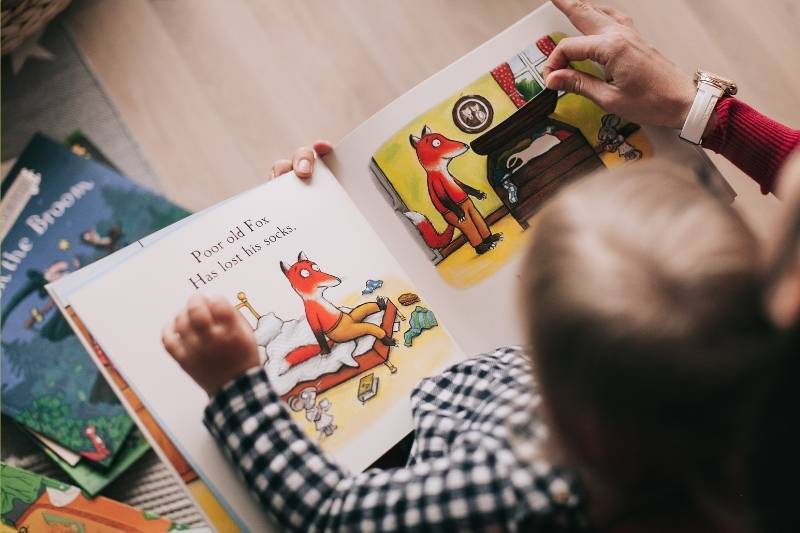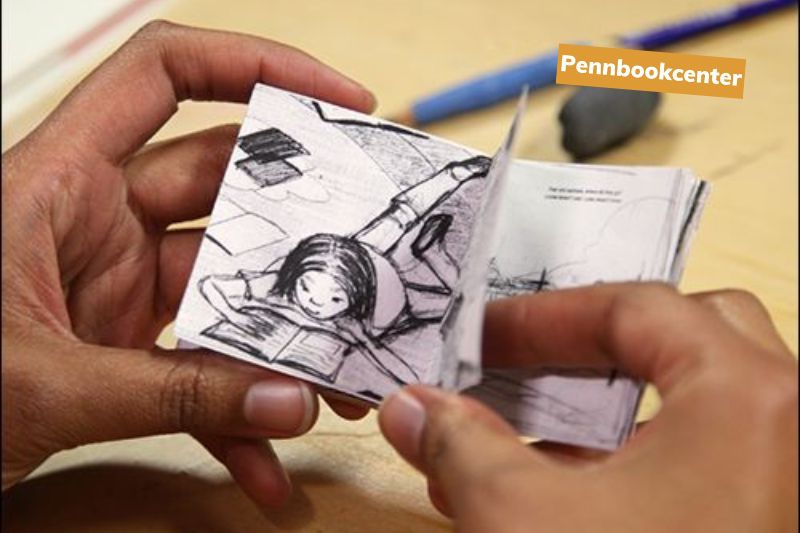Although it might seem easy to write a children’s novel, the process of getting it published and distributing it is not always straightforward. Children’s books that include pictures are more often sent to literary agents and editors than any other kind of book. Illustrations are an essential part of children’s book writing.
How To Illustrate Children’s Books? Penn Book will help you to solve this problem.
How To Illustrate Children’s Books?
You can either hire an illustrator to do your illustrations or hire one if you are self-publishing a children’s book. It takes a lot to illustrate a children’s book, so if you don’t have the budget for a professional illustrator, consider hiring one. Here’s how you can illustrate your first picture book, whether it’s your own or another’s.

Look for stylistic inspiration
Illustrating a children’s book can be a fun and rewarding experience, but it can also be challenging to come up with creative and engaging ideas.
Finding inspiration is crucial to the success of the project, as it helps to create images that resonate with young readers and bring the story to life. Inspiration can come from a variety of sources, including children themselves, the natural world, personal experiences, and collaboration with the author.
In this process, keeping an open mind and exploring different sources can help to ignite your creativity and produce illustrations that capture the essence of the story and captivate the imaginations of young readers.
You can get great inspiration from award-winning picture books and artists if this is your first attempt at children’s book illustration. You can also look at new books to keep up with current trends.
You can play to your strengths by being a skilled artist in watercolors, graphic design, or line drawings. Keep reading level and your age range in mind when brainstorming.
Concentrate on character development
Character development is an essential aspect of illustrating a children’s book. The illustrations of the characters need to capture their personalities, emotions, and mannerisms to engage young readers and bring the story to life.
By focusing on character development, you can create illustrations that not only complement the text but also help young readers connect with the characters on a deeper level. Effective character development can be achieved through careful attention to detail, such as the use of body language, facial expressions, and color palettes.
The main character in most children’s books is the protagonist. This character can be drawn in many different situations and expressions. Young readers will appreciate continuity. Learn more about character development in our guide here.
Start with a storyboard
A storyboard provides a visual outline of the book and helps to plan the layout of the illustrations. It also helps to ensure that the illustrations flow smoothly with the text and captures the essence of the story.
A storyboard can be as simple or as detailed as needed, but it should outline the key scenes and events in the story. The use of a storyboard can save time and reduce the risk of errors when it comes to creating the final illustrations.
By having a clear plan and understanding of the direction of the book, it is easier to create illustrations that accurately reflect the story’s mood and tone. In this process, creating a storyboard is essential for illustrating a children’s book and can help to create a final product that is both engaging and visually appealing to young readers.
Get feedback
You should give feedback to editors, authors, art directors, friends, and fellow illustrators. You’ll be more flexible if you are illustrating your book. However, if you are illustrating for another person, you might need to go through multiple rounds of editing.
Arrange final artwork and text
After the artwork has been approved, it’s time to place the text. A publishing company may have a book designer that will combine your illustrations with the text. If you are working alone, you will need to edit your images, including layout, resizing, and book cover design.

Tips for Illustrating Children’s Books
Be persistent
My journey into the world of books was difficult, and I was easily intimidated when I started. I persevered, continued to draw and create new work, improved my style (still a work in progress), and started contacting people. It paid off.
My agency was at a trade fair. I introduced myself to them and showed them my portfolio. I was accepted by them shortly after. They also represent artists with a similar style as mine. An agent can be a great help, but it is not the only way to become an illustrator of books.
Inspiration is everywhere
It doesn’t matter if it is a song or a TV show. I will take whatever inspires me and make it my own. I saw a shirt with a picture showing an ice cream cone in it. How can I create my own cool ice cream cone illustration? I heard a song about love. How can I create my own love story?
You need to be open to the possibility of inspiration. To get my day started, I love to visit certain websites with my morning cup of coffee. It helps me see the available opportunities. There are many options: Pinterest, Instagram and Twitter, blogs, Tumblr, and Twitter. Pinterest is my favorite it has so many amazing ideas, resources, and people.
My mobile publisher Storypanda was where I found my inspiration for Storypanda. They began following me, and I reached out to them. We started working together on Mompers, my first iPad storybook app.
Draw, don’t think
The blank page can be intimidating for me. A friend and editor of mine used this phrase once, which made me think out loud: “Don’t think, draw.”
My best sketches come when I’m not thinking. When I’m sketching on the phone or watching TV, I don’t think. I don’t worry about whether it will make a good sketch. I draw because I love drawing.
When I get nervous about starting a project, I tell myself to ‘Don’t think – DRAW’. Then I start working and keep going until I find something I love.
The first draft will not be perfect
When something didn’t look or feel right, I would get panicky. I used to picture it in my mind. Even if it weren’t a job I was being paid for, I would often leave it incomplete.
Another friend said that the first draft is almost always not going to be a success. You need to create or draw the first sketch or draft to make it a great story or piece. You start with a sketch or an idea. Then you revise and edit until it is what you imagined.

Choose a work style that suits your needs
There are many different ways to accomplish things today. My personal preference is to draw by hand. To keep the linework visible, I sometimes color the drawing in Photoshop (part of Adobe’s Creative Cloud). Sometimes I redraw the sketch using Illustrator. This allows me to make changes and create duplicate characters or backgrounds.
I enjoy experimenting with different things so that I don’t do the same thing for every job. This has also allowed me to learn a lot. It’s the best thing about being a freelance illustrator. Every day is new. You can draw monsters one minute and ponies the next.
Always have another set of eyes to help
Sometimes, when you’re writing or drawing book illustrations, you get so involved that you miss important details or don’t see them. Ask a friend to look at the work. They might spot a problem with a color or a sentence that needs to be changed.
While I may not have the joy of working from home, I do have the option to email my fellow Illustrator and writer friends with ideas, thoughts, and photos. It is a great idea to have creative support around you.
Rejection is also a valuable learning tool. Although I have had many rejections when I tried to pitch or show my portfolio to publishers, I still view it as a learning opportunity. These experiences are what help you learn and move forward. Don’t let rejection get you down!
Continue reading
Do you require further assistance? From a brief to a book: A beginner’s introduction to book illustration, in which we explain how the publication cycle works for artists, and some of the industry’s finest art directors offer advice on how to get your work recognized.
Teach a lesson
If you want to teach a lesson, make sure it’s done in a way that’s not too heavy-handed. Many children’s books contain moral lessons, and if you can find one that your child enjoys, you can use it as a teaching tool. Just be sure to keep the message light and avoid being too didactic.
Have fun
Writing a children’s book can be a fun and rewarding experience. However, it’s important to make sure you’re enjoying the process, as this will come through in your work. If you’re finding the process frustrating or difficult, take a step back and reassess why you decided to write a children’s book in the first place.
It’s important to remember that the goal is to create a fun and enjoyable book for children, so make sure you’re having fun while writing it.
Why Are Book Covers Important?

Book covers are important because they help readers identify books that will be of interest to them. A well-designed book cover can also help a book stand out on a shelf, which is especially important for books that are published by small presses or self-published authors.
In addition, book covers can give readers a sense of what the book is about before they even read the summary on the back.
FAQs

How much does it cost to illustrate a children’s book?
Some designers and illustrators charge an hourly fee, while others have a fixed price per project or illustration. Most established companies offer special agreements. Self-publishers are most likely to seek a flat fee for a one time publication.
Pricing is difficult because there are many ways to determine the price in the industry. However, you can expect to pay anywhere from $1000 to $10.000 for a book, depending on the pages and Illustrator’s experience, and any other special requirements.
The Graphic Artists Guild Handbook, Pricing, and Ethical Guidelines provide current industry rates. For well-known illustrators who have been in the business for a long time, the rates are higher. Not only do you pay for their expertise, but also their name.
What is the best medium to illustrate a children’s book?
While children’s book illustration sounds great, it can be more difficult than other art forms. It’s a good idea for those who want to achieve naturalism and traditional media (watercolor, pastels, and acrylics) to learn various techniques.
See more: https://getyourbookillustrations.com/types-of-illustrations-for-childrens-books/
Do children’s book illustrators get royalties?
You will keep the full royalty rate if you are both the Illustrator and the author. It would be around 10%, with possible benchmarks that could increase it to around 15%. If you are the only Illustrator, royalties will be divided equally between you (the author) and you.
How many pages should a children’s book be?
Length: Picture books have a standard length of 32 pages. Eight pages folded into a signature (16-page) are the standard for large sheets of paper when printers fold them. Any more pages will result in pages that are too thick to be bound.
Read more: How To Grade Comic Books? Best Full Guide [2022]
Conclusion
Thank you for reading! I hope this article has given you some helpful tips on how to illustrate children’s books. If you’re interested in learning more, be sure to check out my other articles on the subject. And if you have any questions, feel free to leave a comment below or contact me directly. Thanks again!
